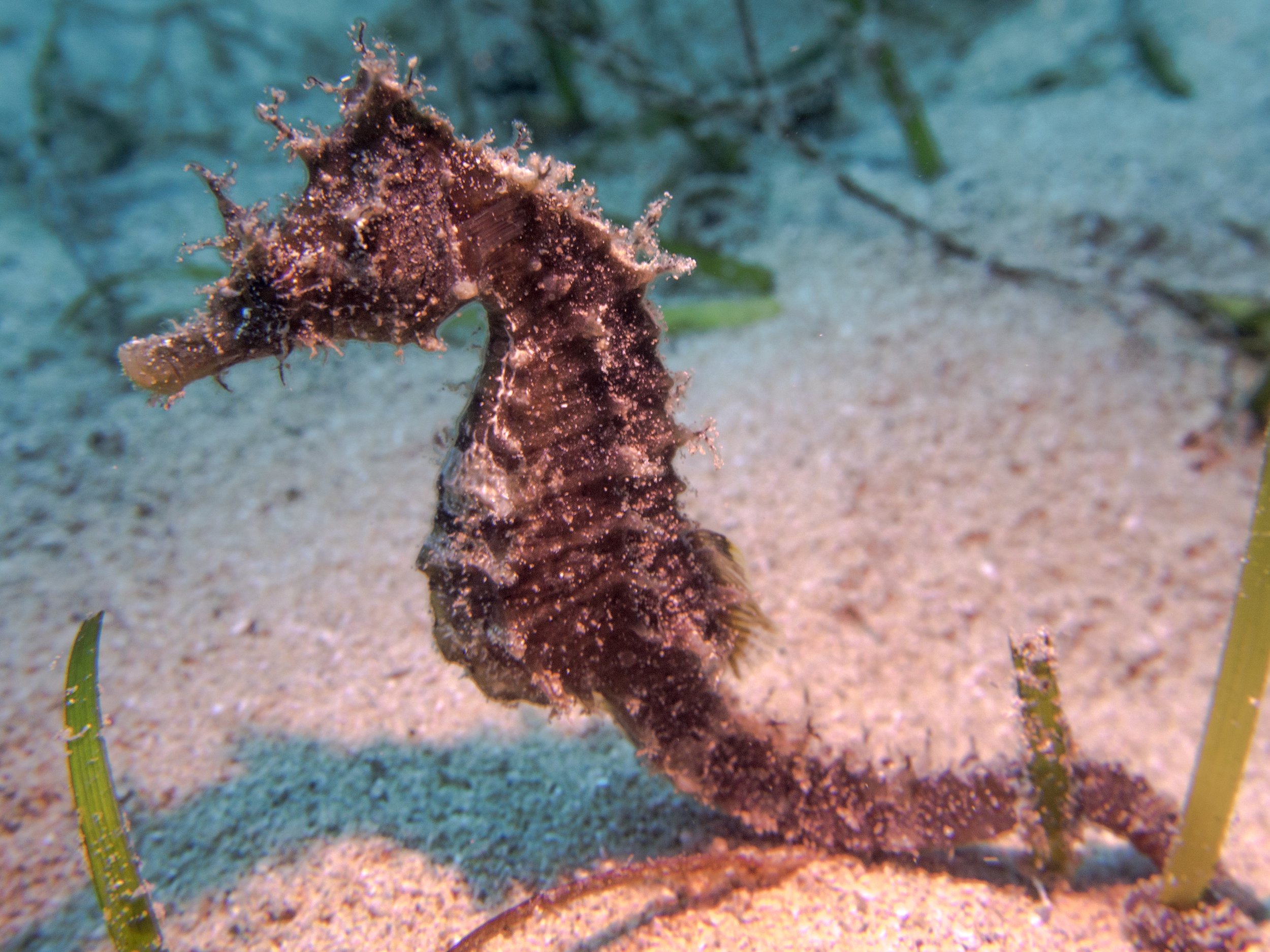Seahorses
The Latin name for seahorse is Hippocampus which means “Horse Caterpillar”
Seahorses eat small crustacea such as Mysis Shrimp. An adult eats 30-50 times a day. Seahorse fry (baby seahorses) eat a staggering 3000 pieces of food per day.
Seahorses have long thin snouts enabling them to probe into nooks and crannies for food. When they find food they suck it up through their snouts like a vacuum cleaner. Their snouts can expand if their prey Is larger than the snout. They are not able to chew and have to disintegrate the food as they eat it.
It was always thought that Seahorses pair for life but research by The Seahorse trust has shown that pair bonding is just for a few months or a season at a time. They meet first thing in the morning to reinforce their pair bonding with an elaborate courtship display. The female meets the male in his territory and as they approach each other, they change colour. The male circles around the female and the pair often spiral around an object. This display can last for up to an hour. Once over the female goes back to her territory.
Females have a territory of about 100 sq metres and males have a territory of about 0.5 sq metres. Their territories overlap.
The male is the only creature where the male has a true reversed pregnancy. The female transfers her eggs to the male which he self-fertilises in his pouch. The number of eggs can vary from 50-150 for smaller species to 1500 for larger species.
They receive everything they need in the pouch from oxygen to food. Gestation time varies from 14 days to 4 weeks. Giving birth can be a long process with contractions lasting up to 12 hours.
Seahorses have a prehensile tail. This allows them to grip onto eel grass and other weeds and prevents them from being washed away by strong currents and waves.
Unlike most other fish, seahorses have an exo-skeleton. Their bodies are made up of hard, external, bony plates that are fused together with a fleshy covering. They do not have scales.
Seahorses are poor swimmers. They rely on their dorsal fin beating at 30-70 times per second to propel it along. Pectoral fins either side of the head help with stability and steering.
Seahorses live in shallow weedy areas especially eel grass beds. In winter they move into deeper waters to escape the rough weather.









